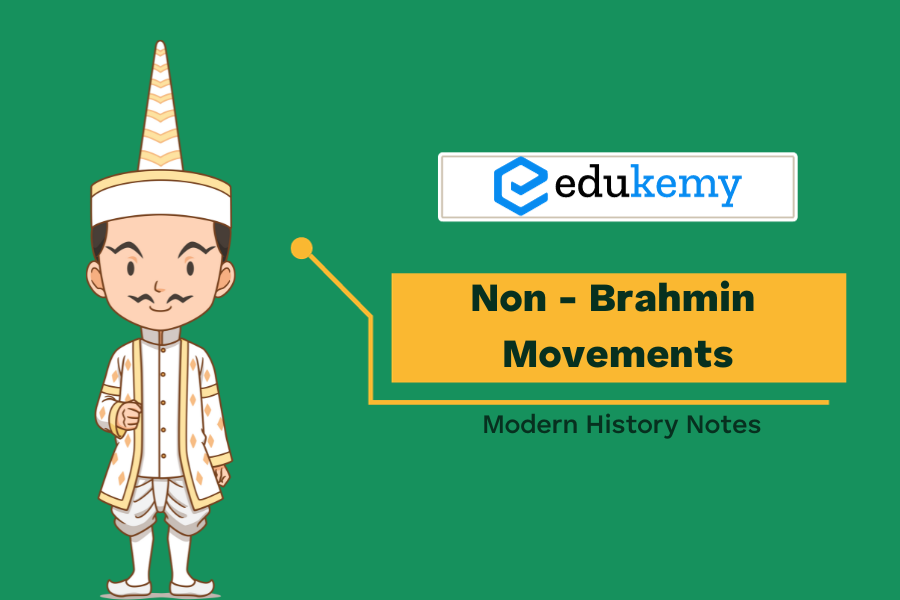- The upper in reverse or non-Brahmin projected of south India, especially the Vellalas, the Reddis, the karmas, the lingayats, the Vokkaligas, and the Marathas, loathed the strength of the Brahmins. They raised the issue of double-dealing and persecution, both financial and social, by the Brahmins. The non-Brahmins of Tamilnadu requested a different state for the Dravidians. They went against, patriot development overwhelmed by the Brahmins during the 1920s and pronounced their loyalty to the British.
- Positions in Society
- Rao divided non-upper stations/classes into three classifications. The highest class of the retrogressive ranks comprises generally landowners. There are a few such positions in various pieces of the country, like the Jats, the Ahirs, the Gujjars in Punjab, the Marathas in Maharashtra, the Vokkaligas, and the, Bants in Karnataka. Positioning beneath them are inhabitant cultivators, craftsmen, and other assistance standings. They remember the Ahirs and the Kahars for Bihar, the Kolis in Gujarat, and the Vaddars in South India. They are viewed as station Hindus, over the contamination line. They have not appreciated political power in that frame of mind past. The greater part of them is little or peripheral ranchers, inhabitants, or horticultural workers. ‘They were under the financial and political control of the landowning ranks. The last option frequently blackmailed constrained work from the previous as homegrown workers and cart conveyors and anticipated a few standard installments. At the base are the unapproachable positions who are assigned Scheduled Castes under the constitution of India. The social-monetary states of the vast majority of the Scheduled Castes and others in reverse positions are subjectively unique, however, a portion of the non-upper standing developments, known as hostile to Brahmin developments, included untouchables. The majority of the investigations on the untouchables’ developments do exclude the developments of the others in reverse positions.
- The non-Brahman Movement was begun by those non-Brahman ranks that had gained admittance to instruction, riches, and impact. The development was coordinated against the authority of the Brahmins and the treacheries of the rank framework. The non-Brahman development worried about the way that the Brahmins were the successors to the Aryans who had attacked north India. They later moved to south India and stifled the Dravidians — the first occupants of the land. The British frontier time frame saw numerous non-Brahmin developments in the country against the Brahman people group.
- In Western India, the non-Brahman development was the most grounded in Maharashtra. Jyotirao Phule, who had a place with the mali standing was the scholarly top of this development. His compositions and his Satyashodhak Samaj were the establishments of this development. Afterward, Shahu Maharaj who was the Maratha lord of Kolhapur additionally betrayed the Brahmans. The 1920s saw the ascent of Dr. B. R. Ambedkar’s Dalit development. Keshavrao Jedhe, Dinkarrao Javalkar, and others had tested the Brahman social strength in the city of Pune and impeded the Communist development in Bombay that was Brahman-ruled.
- In South India, the non-Brahmin development was called the Self-regard development. The vast majority of the Brahmins in Tamil Nadu were educated thus they had the option to adjust to the British culture soon. This caused an in middle between the Brahmin class and the non-Brahman classes. In 1916, the non-Brahman development turned into a political development in Madras city. This prompted the development of a Justice Party, which had delegates from the Muslim religion, Christians, and the Shudras. In any case, later there were struggles under the surface inside the Justice party and a public development was begun which pulled in the majority of the non-Brahman laborers. E.V. Ramasami Naicker, otherwise called “Periyar”, was a significant scholarly behind this development. He began a Satyagraha in Vaikom, Kerala, on the Gandhian strides and upheld the Harijans moreover.
Contents
Frequently Asked Questions (FAQs)
Q1: What was the Non-Brahmin Movement in modern Indian history?
A1: The Non-Brahmin Movement was a social and political reform movement that emerged in early 20th-century South India, primarily in the regions of Maharashtra, Karnataka, and Tamil Nadu. It aimed to address caste-based discrimination and the dominance of Brahmins in various social, educational, and political spheres. Non-Brahmins sought equal opportunities and representation, challenging the traditional hierarchies prevalent in Hindu society.
Q2: What were the key objectives of the Non-Brahmin Movement?
A2: The Non-Brahmin Movement had several key objectives. Firstly, it aimed to dismantle the social and educational monopoly held by Brahmins, advocating for increased access to education and employment for individuals from non-Brahmin communities. Secondly, it sought to promote social equality by challenging caste-based discrimination and untouchability. Lastly, the movement aimed to create a more inclusive political system that reflected the diversity of the population, ensuring fair representation for all communities.
Q3: Who were the prominent leaders associated with the Non-Brahmin Movement?
A3: The Non-Brahmin Movement saw the emergence of influential leaders who played crucial roles in advocating for social justice and equality. In Maharashtra, leaders like Jyotirao Phule and Dr. B. R. Ambedkar were instrumental in addressing caste-based disparities. In Tamil Nadu, E. V. Ramasamy (Periyar) led the Self-Respect Movement, challenging Brahminical dominance. Karnataka witnessed the efforts of leaders like K. H. Ramanuja Iyengar. These leaders contributed significantly to shaping the socio-political landscape and fostering a more egalitarian society in South India.
In case you still have your doubts, contact us on 9811333901.
For UPSC Prelims Resources, Click here
For Daily Updates and Study Material:
Join our Telegram Channel – Edukemy for IAS
- 1. Learn through Videos – here
- 2. Be Exam Ready by Practicing Daily MCQs – here
- 3. Daily Newsletter – Get all your Current Affairs Covered – here
- 4. Mains Answer Writing Practice – here

